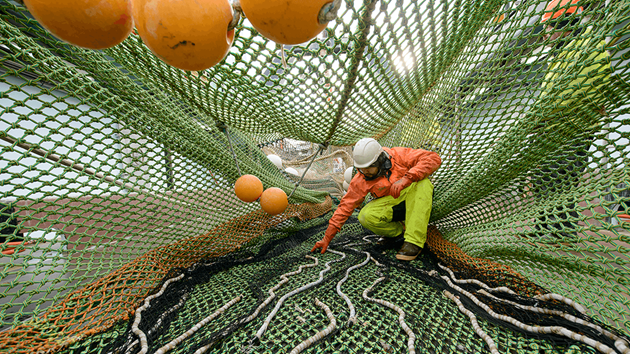June 2016
Seabird bycatch can be a serious problem. A survey by BirdLife in 2011 estimated that up to 300,000 birds were killed around the world every year after becoming ensnared on longline hooks.
Not so long ago, fisheries in the Southern Ocean had little regulation on the mortality of the region’s thousands of seabirds.
However, smarter fishing practices have brought dramatic improvements – as seen in the MSC certified toothfish fishery in the Kerguelen Islands.
In the early days of toothfish fishing in the Southern Ocean, many thousands of endangered albatrosses and petrels were killed annually, threatening important populations.
Since then, most fisheries have made significant progress in reducing mortality rates by changing fishing practices in line with the Convention on the Conservation of Antarctic Marine Living Resources (CCAMLR) requirements.
Albatross deaths in licensed longline fisheries have effectively been eliminated by setting and hauling lines only at night.
Petrels, however, forage after dark, so further mitigation measures are needed.
The Kerguelen Islands, a remote French-controlled archipelago in the Southern Indian Ocean, contains a globally significant breeding populations of petrels.
When the Kerguelen toothfish fishery sought MSC certification, concerns were raised about seabird mortality – particularly the grey petrel, which is listed as “Near Threatened” on the IUCN Red List.
2011
Thousands of bird deaths recorded
2014/15
80 deaths records
2017
Target <20 deaths
Before 2005, around 750 grey petrels were being killed each year in legal and illegal fisheries around Kerguelen – enough to cause a decline in the population. Mortality rates dropped enormously when CCAMLR requirements were adopted.
Nevertheless, Kerguelen was identified as a high-risk area and seabird bycatch remained higher than in the best-performing fisheries.
In 2013, the fishery passed its assessment to become MSC certified. But certification came with a condition: to reduce seabird mortality year by year until all vessels were performing at the best possible level.
The target was to reduce fatalities to an annual maximum of 20 birds of all species per vessel by the end of the fourth year of certification. In addition, the fishery had to put in place a monitoring system specifically for grey petrels.

The fishery implemented a number of measures to reduce interactions with seabirds, including
- Increasing the weight of fishing lines so that they sink faster
- Using white lines that are less visible to birds
- Improving the design of Tori lines (multi-coloured streamer lines hung vertically above the longline as it is set) to deter birds from diving to eat the baited hooks attached to longlines
- Using a protective barrier of hanging streamers to keep birds away from the hauling point while the lines are hauled in
- Closing the fishery during the grey petrel breeding season, from 1 February to 15 March.
“There’s been a dramatic decline in seabird mortality in Antarctic fisheries in recent years. MSC certification recognises the improvements that we have made to meet best practice in reducing seabird bycatch.”
In addition, as an incentive to individual vessels to improve their performance, those with lower rates of seabird mortality are granted a slightly higher share of the overall toothfish quota – although auditors have said they would like to see more of a cooperative system for sharing best practice across the fleet.
The latest surveillance report concluded that the fishery was well ahead of its target for reducing seabird mortality. In 2014-15, a total of 80 birds were killed or injured. Just three dead grey petrels were reported.
While any seabird bycatch is regrettable, the rate of mortality is unlikely to have any negative impact on petrel populations and is a vast improvement on the situation before MSC certification.


